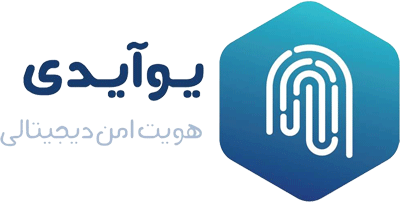Anti-money laundering (AML) refers to the legal requirements that financial institutions and other regulated companies follow to prevent, detect, and report money laundering. Financial institutions are required to comply with AML procedures under regulations such as the Bank Secrecy Act (BSA) of 1970 and the more current USA Patriot Act.
Anti-money laundering (AML) is a set of procedures, laws, and regulations aimed at preventing the unlawful generation of funds. Even though anti-money laundering rules only apply to a small number of transactions and criminal activities, they have far-reaching consequences.
Know Your Customer (KYC) is the process of verifying your clients’ identities before or after they begin doing business with you. KYC also refers to the regulated bank customer identity verification methods that are used to assess and monitor customer risk. The KYC procedure is also a legal requirement meant to prevent money laundering.
Anti-Money Laundering (AML) has a long history
When the Financial Action Task Force (FATF) was created in 1989, it brought together a group of governments and organizations from around the world. Its purpose was to develop and promote international standards to combat money laundering. The US Department of Treasury founded the Financial Crimes Enforcement Network (FinCEN) in 1990 to “protect the financial system from illegal use, combat money laundering, and enhance national security.”
FATF’s mandate was expanded to include measures to prevent terrorist financing in October 2001, shortly after the 9/11 terrorist attacks on the United States, when the USA Patriot Act was passed.
Your Identity Verification Process and AML Compliance
In the digital world, online identity verification is the beginning point for AML compliance. If the EU’s Fourth Anti-Money Laundering Directive is any indicator, regulators are getting more comfortable with and even supporting, the use of digital client identity verification. The European Commission recognizes that.
“Fighting money laundering and terrorist funding requires accurate identification and verification of data of natural and legal individuals. The latest technological advancements in transaction and payment digitization enable secure remote or electronic identification.”
According to Gov.UK, firms must conduct due diligence by conducting checks on their business and customers, as well as keeping records, to help prevent money laundering. Client due diligence and customer identification go hand in hand. It is the responsibility of a financial institution to check and verify who a customer is.
In practice, this entails acquiring a customer’s name, a photograph on an official document confirming their identification, their residential address, and their date of birth. The best way to do this is to request a government-issued document, such as a passport, as well as utility bills, bank statements, and other official documents.
When it comes to the role of online identity verification, AML and KYC go hand in hand.
In order to engage a commitment of AML, look for solution which is a system with the following features and benefits:
- Customers find it convenient.
- A high level of assurance that your consumers are who they claim to be.
- Mobile and web-based, with on-device technology, biometrics (such as facial recognition with liveness detection), compatible machine learning, and identity specialists.
- An extra degree of security through document verification by collecting information from bank statements or utility bills to help verify proof of residency.
KYC vs. AML: What’s the Difference?
Many financial companies erroneously blur the lines between KYC and AML practices, resulting in regulatory penalties. As previously stated, KYC refers to the process of verifying one’s identification. Determine who the client is. Its main goal is to help you better understand your clients and their financial transactions, allowing you to manage risks more effectively.
An AML program, on the other hand, comprises of the following:
- Customer Due Diligence (CDD) and Enhanced Due Diligence (EDD) are two types of KYC procedures
- AML policies that are risk-based
- Continuous risk assessment and monitoring
- Staff training packages for AML compliance
- Internal audits and internal controls
Your Customer Identity Program and KYC Compliance
How can you tell if someone is who they claim to be? When your consumers aren’t sitting across the desk from you, how do you respond to this question?
KYC compliance has a significant impact on how financial services organizations enable customers to register accounts and conduct financial transactions on their preferred devices. Customers want to bank online, but banks must comply with anti-money laundering and know-your-customer (AML/KYC) regulations while simultaneously combating fraud, financial crimes, and high-risk transactions.
You’ll need an identity verification solution that combines both ease for your customers and security for your business to meet your KYC standards.
Digital Identity Verification
UID is Iran’s first identity verification platform, employing advanced artificial intelligence techniques such as liveness detection and face verification to authenticate users’ identities. UID currently has over 30,000 successful authentications each day.
As a new service, UID has developed a digital authentication Application Programming Interface (API) for businesses, in response to the growing need for enterprises to improve their user experience while also strengthening security in the digital environment.
Read more about How Does Identity Verification with AI Work?
What Is the UID Verification API and How Does It Work?
UID has created a digital authentication API solution for enterprises using Machine Learning and Deep Learning algorithms.
Businesses will be able to identify and verify users’ identities in less than one minute using this API, removing the time-consuming requirement of user presence. The two steps of the UID API authentication process are as follows:
Face Verification
If the user’s liveness was validated in the previous phase, this step will commence. A random frame from the user’s selfie video would be taken at this point. The user’s national ID card photo will next be compared to this photo. The user authentication process would be finished, and his identity would be certified if these two photographs were matched.
Liveness Detection
The user should record a 5-second selfie video at the liveness detection level. UID employs a liveness detection algorithm to detect the user’s liveness and prevent any sort of ID spoofing, such as taking a selfie video from someone else’s video or image. The accuracy of the UID liveness detection algorithm is greater than 96 percent.
For more information about UID digital identity verification system, click on the link.
How UID Helps financial services?
With reliable, real-time online ID and identity verification, UID helps financial institutions meet KYC compliance standards. Banks and other financial institutions have used our solutions to replace slow, ineffective, and manual KYC processes with more automated solutions that can be integrated into the online account setup and onboarding process.
Furthermore, since our identity verification solutions are already compliant with the most thorough requirements, UID’s solutions assist banks and other financial institutions support continuing Anti Money Laundering compliance processes on a worldwide scale.
UID’s AI-powered end-to-end identity verification and authentication solutions help businesses maximize onboarding and comply with KYC and AML laws.
Meet Regulatory Requirements While Also Delighting Your Customers
You don’t have to sacrifice user experience to meet KYC and AML standards’ identity verification criteria. With user-centric design, UID assists you in balancing both priorities, giving extra smoothness to sections where you need to ask your consumers for more details to verify their identity. UID’s unique SDKs, for example, offer glare and blur recognition, which provides real-time feedback to enable customers submit only high-quality images for document verification.
Our OCR Autofill collects information from their ID card and uses it to automatically prefill the sign-up form, eliminating the need for them to type. Easy. Our SDKs work on all platforms, from PC to tablet to smartphone, allowing consumers to choose what works best for them.
A Risk-Based Strategy That Meets Your KYC Identity Verification Needs
Create a registration process that works for your company. When it comes to identity verification for KYC and AML compliance, you need a risk-based solution that fits into your overall strategy for complying with these standards. We’ve designed customized UID presets so you can find the ideal balance of convenience and security to meet the level of risk you’re comfortable with and the specific risk profiles of your users.
For example, you can use a document-first onboarding procedure to complement or completely replace traditional credit data checks. Only users who do not match traditional data sources will be required to provide an additional document or biometric check to verify their identification in the first instance. In the second case, all users must complete a biometric step during onboarding, ensuring that each user is authentic and the rightful owner of their ID.
Reduce Operating Costs and Scale Up More Quickly Than Ever Before
A manual review might drive up your compliance costs, but it doesn’t have to. By combining AI and human specialists and optimizing the process to cut internal expenses, UID enables you to scale cost-effectively. We’ll send you a report whenever we do checks for your company, highlighting anything that need your attention. These detailed analyses show you which users are suspicious and why they are suspicious.
This implies that your internal teams will be able to handle the issue fast and effectively, potentially saving you thousands of hours of manual review time.
Reduce the Possibility Financial Crime
AML fines of more than $8 billion were issued in 2019. You can stay in compliance and show regulators how seriously you take financial crime by implementing ID, identity, and document verification systems, PEPs and sanctions screening, transaction monitoring, and case management.
Improve Customer Due Diligence Processes
The act of doing background checks on customers to verify that they are correctly risk-assessed before being onboarded is known as customer due diligence. UID can assist in ensuring that new consumers are not on any banned lists and assessing their risk factors.
Embrace Your Digital Future
The world of finance has gone digital. We can assist you in scaling up to serve all of those customers. You’ll need a user experience that can compete with a new world of instantly accessible digital services that can aid you with KYC and AML compliance without slowing down the sign-up process. So, you can stop thinking about onboarding one person at a time and start onboarding millions.
It’s never been easier, safer, or more efficient to verify someone’s identity for AML and KYC.









